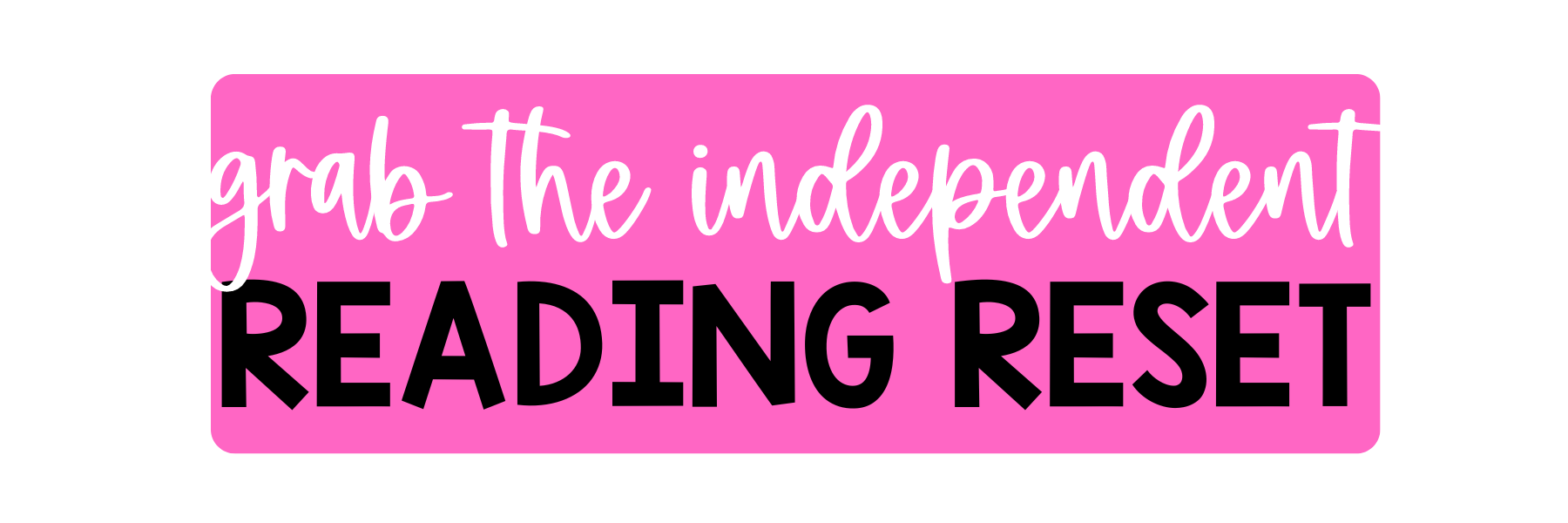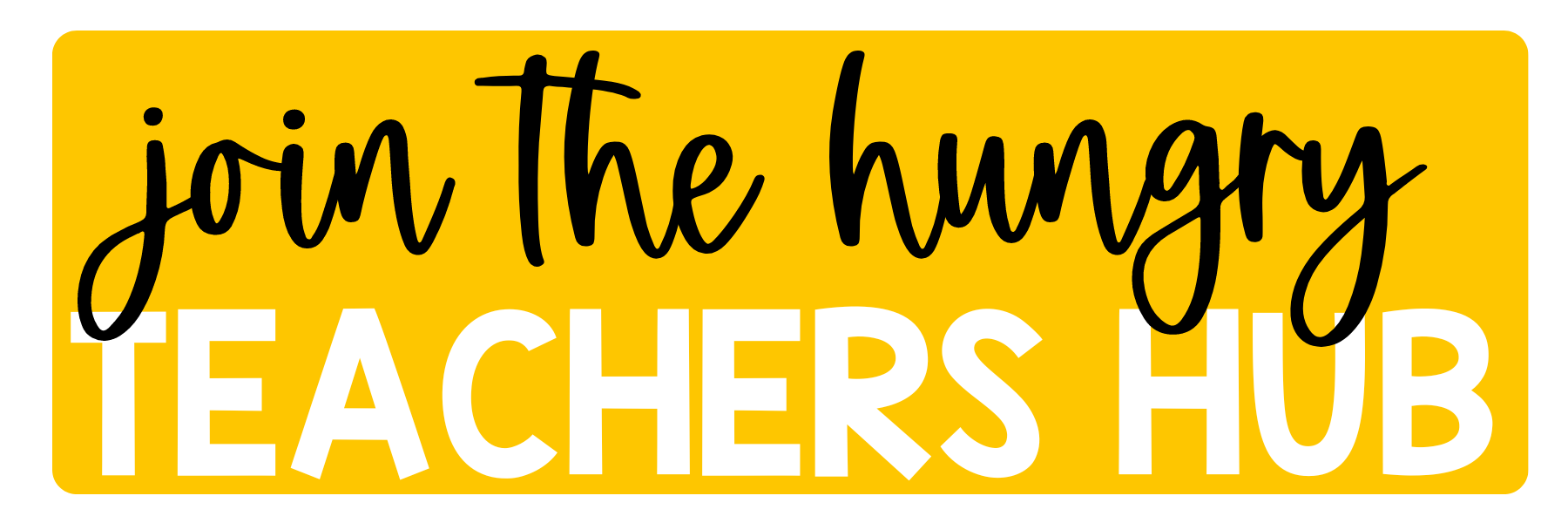hey friend!
I'm Martina.
I provide practical, time-saving strategies that actually work—so you can engage your students, teach effectively, and reclaim your time from the exhausting planning-grading cycle.
Browse Our ELA Resources
3 Independent Reading Strategies for Middle School
Independent reading can be a struggle. You have a ton of ground to cover each school year, which means your class time is stuffed to the brim. You can’t imagine adding independent reading time, too. And even when you do attempt to make time for students to read on their own, the behavior is so bad – you regret the decision immediately. Luckily, there’s a way out of this chaos. With the right independent reading strategies for middle school, independent reading can be a part of your routine (without the headache).

Independent Reading Strategies for Middle School
You know how important it is for students to read on their own, which is why you’ve made attempts to do it in the past. But after a while, the stress of trying to find time and dealing with behavioral issues made you rethink the whole idea. Before I share some independent trading strategies with you, I want to find remind you of the why.
Independent reading isn’t just about expanding students’ skills. It’s about building a love of reading (hopefully!) and helping students see that reading is a part of their life. Whether they’re reading books for college courses or reading the news, reading doesn’t go away.
All of the independent reading strategies for middle school that I cover in today’s blog are from my workshop, The Independent Reading Reset! In this workshop, I’m sharing 18+ strategies and resources you can use to get students engaged in independent reading. It helps to make it an effective use of time in the classroom. Learn more about the workshop.
#1 Creating a Reading Community
Before you rush into independent reading, you have to take a step back and work on your classroom community. If your classroom is anything like the ones I’ve taught in, you have a wide range of interest in reading. Anywhere from absolutely not having it to the avid reader.
You can’t convert resistant readers into engaged ones overnight, but you can make reading less painful. And that starts with creating a reading community.
In The Independent Reading Reset workshop, I walk about how you can use student interest surveys and reading life records to learn about student interests, explore different genres, and help students dip their toes into reading. This is a no-pressure way to support reluctant readers. Don’t worry about how many books they finish, focus on how many they try and experiment with. The goal is to find something that interests them.

#2 Creating a Reading Routine
Another simple independent reading strategy for middle school is to establish a reading routine. I know, it sounds obvious. But where a lot of teachers get hung up is trying to carve out a ton of time for reading in their crammed schedule. Or dedicating a day to independent reading. (I’ll share why that’s not a good idea.)
In the The Independent Reading Reset workshop, I talk about how my goal was 20 minutes of reading time a day. However, that’s not going to work for every teacher. Your goal may be 10 minutes.
Either way, you’re not going to start at 10 minutes because students have to work on their stamina. Start with 5 minutes (or even 3 minutes if that’s all you have). Students can stay on task for that quick burst of reading time, which decreases behavior issues. Slowly, you can increase the reading time. This is also why I don’t recommend a whole day of reading. Most students don’t have the stamina for 40 minutes of reading, especially in the beginning.
#3 Status of the Class
A big concern I hear from teachers is that independent reading feels like wasted time. Students might pretend to read or read one book for several months. Reading logs used to be the standard for holding students accountable with independent reading, but I like using Status of the Class.
In The Independent Reading Reset workshop, I show you exactly how I used Status of the Class with my own students, but I’ll give you a quick recap here. With this independent reading strategy for middle school, you’ll be verbally checking in on students’ reading progress. For example, during warm-ups or at the end of class, ask students how reading is going. Have they gotten to the next chapter? Stopped reading the book? Bored with the story?
This is your chance to encourage students, help them find a new book, or even let them know it’s okay to ditch their current read for something better. Plus, when you attend the workshop, I’ll give you a Status of the Class template, so you can implement this strategy right away.

The Independent Reading Workshop
These independent reading strategies for middle school are just the tip of the iceberg. In The Independent Reading Reset workshop, I’m sharing 18+ strategies, tools, and resources to help you take independent reading from chaos to time well spent in the classroom.
When you grab the workshop, you’ll get the 120-minute workshop walking you through the strategies and tons of real-life examples. You’ll also get access to bonuses that make implementing these new strategies even easier. Your ticket comes with the Literature and Realistic Fiction Unit, book tasting resource, Status of the Class template, exit tickets, reading response rubrics, and much more.

Want access to all the resources and workshops for ELA teachers? Join The Hungry Teacher’s Hub! This membership is full of tools, trainings, and resources to help you teach middle school with confidence (while still having fun). You’ll have access to The Independent Reading Reset workshop, plus additional trainings, reading units, writing resources, curriculum guides, and more.

Want a sneak peek at teaching The Hungry Teacher way—with support, structure, and strategy?
When you join the waitlist for The Hungry Teacher’s Hub membership, you get three free classroom-ready resources: a theme unit, an expository writing unit, and a grammar unit introducing mentor sentences. Plus, you’ll get immediate access to a selection of exclusives from the Hub, including editable sub plans, pacing guides, and more.
No strings attached. Just resources you can use right now—and a heads-up when the Hub opens.
3 Free Middle School ELA Units—yours to keep!
JOIN THE WAITLIST + A FREE GIFT
Where to next, line leader?
Welcome to The Hungry Teacher! We create resources that are easy to use, practical, and get results. Teach with confidence—and make it home before dinner.
xo, the hungry teacher